Prepare for 47 years to enter the coffee mecca Starbucks Milan how to use & quot; differentiation & quot; to build an advantage
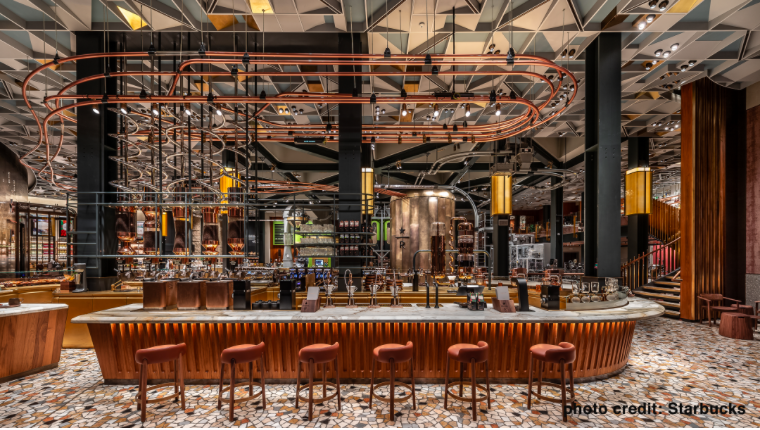
Professional coffee knowledge exchange more coffee bean information please follow the coffee workshop (Wechat official account cafe_style)
Starbucks opened its first store in Milan in September and broke into the coffee mecca Italy, which attracted a lot of attention from all over the world. In fact, carefully found the cultural context, but there is a story. I lived in Italy for two years and loved the strong taste of espresso and its unique culture. As a result, Starbucks' entry into Italy, in my opinion, is not a threat to the local coffee culture, but has made some divisions on the basis of "culture" in the market.
Innovation: espresso and American coffee are two different quadrants from product to culture.
Three key points of this paper are as follows: 1. Drinking coffee is a "grand event" in Italian daily life. Starbucks marched into Italy, focusing on new experiences that are different from traditional ones. Espresso drinks coffee and service; American coffee drinks novelty and atmosphere
1. Drinking coffee is a "grand event" in Italian daily life.
Italy's traditional coffee culture has a long history, just like their favorite coffee, deep and introverted. Italians prefer black, small, bitter coffee to large American or lattes.
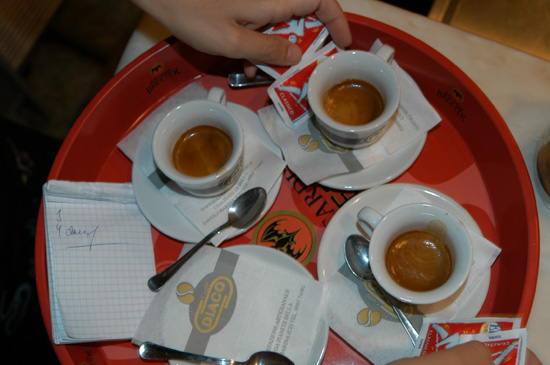
In Italy, drinking coffee is a bland, mundane and natural thing.
Italians often take a break with their colleagues for breakfast, after dinner, or in the afternoon, and they always have a cup of espresso the size of shot. Except for the coffee after dinner, they drink it at the bar table all the time, and it is very efficient. It takes no more than five minutes from ordering coffee to checking out. If you want to take out, most of the coffee will be filled in those small white disposable plastic cups, so each one looks the same. In contrast, the take-out packaging of Starbucks coffee is often new, and the patterns on the paper cups are ever-changing. If the takeout distance is not far, Italian coffee can also be taken out directly in real coffee cups, and when there are more than one cup, you can borrow a tray to take it away, and it is also very common to return it to the store after drinking it.
Italian coffee is not always such a small cup, bitter looks boring. In fact, there can be many changes based on espresso: for example, Macchiato (espresso+ foam), Caff è corretto (espresso+ liquor) can also be paired with dessert or bread. Some stores with more considerate service will give them a small glass of water, a small ball of ice cream or a few cookies for free.
But if you want to drink American coffee in Italy? You must mix yourself with a small cup of espresso and a small pot of hot water. The latte that is common in Taiwan cannot be found in Italy. The closest one, which is also common in Italy, is Cappuccino (or Carpaccio), or another kind called Latte Macchiato. When you want to drink latte in Italy, you can use these two kinds to relieve your gluttony.
two。 Starbucks marched into Italy, focusing on new experiences that are different from traditional ones.
Starbucks, from the United States, knows very well that in order to break into Italy with a strong coffee culture, it must have a "bright spot" that is completely different from the traditional Italian style.
First of all, in terms of external marketing, Starbucks not only calls its Milan branch "the jewel in the crown", but also the most beautiful Starbucks in the world.
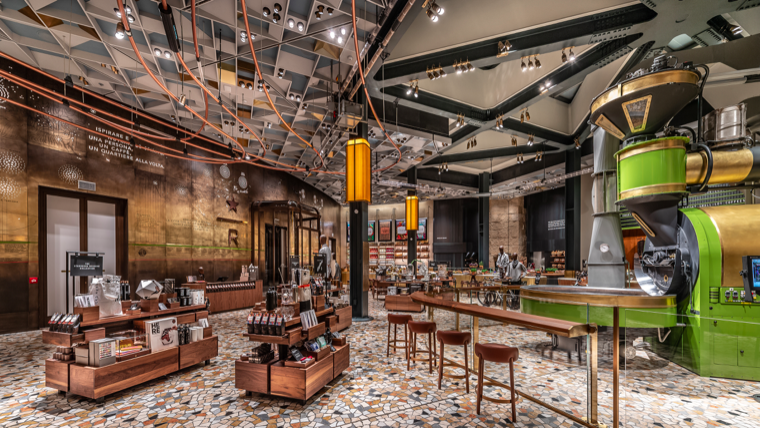
Starbucks also introduced liquid nitrogen ice cream and virtual reality VR to browse Starbucks history. In addition, it offers a variety of hand-made items and 100 kinds of cocktails, including local specialties such as handmade pizza and interior space planning, such as information billboard using Italian origin Solari board (mechanical flip display) and traditional Venetian terrazzo (Venetian Terrace) floor laying handicrafts; and enhance the customer experience, customers can watch the work of Starbucks bakers up close and interact with them. In space, we selected the Milan Stock Exchange, which was designed and built more than 1901 years ago (later turned into a post office), a very magnificent and historic building.
Starbucks understands what coffee means to Italians, and the above-mentioned decoration and design are unreservedly creating a "grand event" for the high-end coffee consumption experience, which is also in line with Starbucks' business strategy since 2014-to expand the world coffee territory with the upscale coffee bakery Roastery.
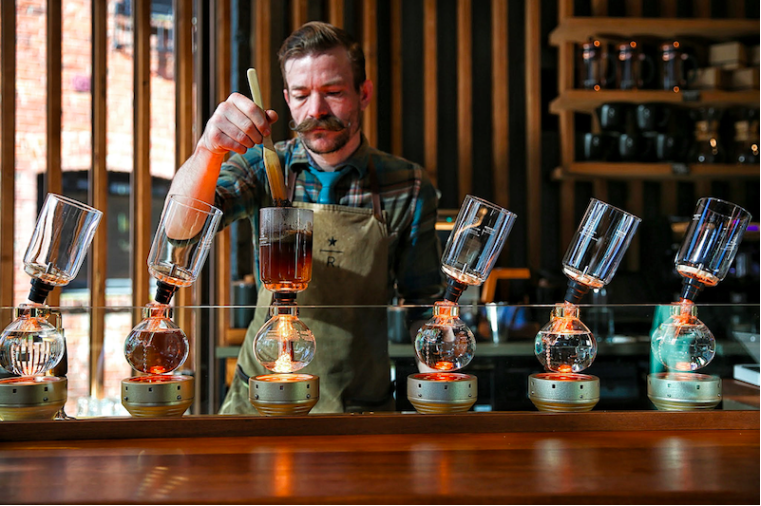
3. Espresso drinks coffee and service; American coffee drinks novelty and atmosphere
In addition to drinking Italian coffee standing, you can also sit down and drink it gracefully. If you plan to sit down during breakfast, walk into the bar, order coffee at the counter and order from the display cabinet (mostly for praise or sandwiches), you can be seated, and the coffee will be served later. For lunch or dinner, after being seated, the waiter will order. After the meal, the waiter will come again to ask if you want coffee or dessert. The coffee is drunk after the meal and is separate from the meal. That's what orthodox Italian is like. No one drinks coffee during a meal. This bothers me when I just got there, especially at McDonald's, where you can't change coffee for set drinks! (Italian OS: hamburger with coffee? How decent is that? )
However, no matter which meal it is, as long as you sit down, the coffee will be delivered to you by the waiter. This is the Italian attitude I have experienced: "guests first, meals are big." People stay in bar and restaurants to enjoy the delicious food and moment to meet their friends, rather than reading books or using computers.
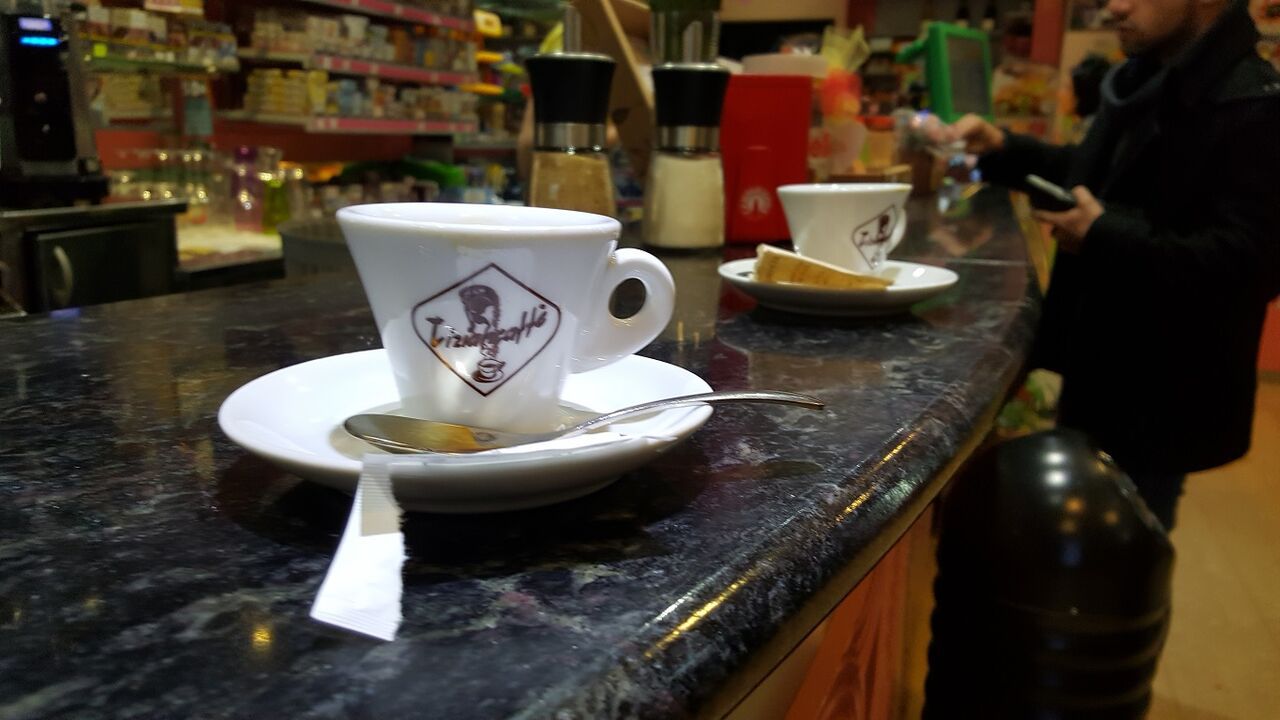
This is very different from the American coffee culture, which is dominated by rapid consumption. Take Starbucks as an example, it is common for guests to order and pick up their own meals, and some even clean up the table after eating. Cafes are like public sharing spaces, where people like to "third place" to do their own things, possibly for hours at a time, reading books, using computers or discussing homework with friends. The so-called "I am not at home, company / school, is in the coffee shop" (laughter). Not only will the coffee shop provide other services such as free wifi, but the taste of the meal will be constantly innovated to meet the tastes of the masses or to create new expectations. Only a few weeks after I came back to Taiwan, I heard different fancy product names of Starbucks, such as cloud ice shake espresso, cantaloupe white chocolate star ice cream. This is not the case in Italy, where every coffee shop has sold the same for decades, comparing who is a time-honored brand, which is different from the consumption strategy advocated by American coffee shops.
In a nutshell, Italian coffee culture is very "authentic" and "real", less influenced by the outside world, and has its own traditional personality. (speaking of which, it reminds me of Italian cooking. In fact, it is also very particular about procedures and whether the ingredients follow traditional recipes, such as fresh tomatoes must not be replaced by ketchup, otherwise they can not be falsely called Italian cuisine). But you can also say that Italian is proud of its own culture, while American is popular, adjusting its product mix according to the market to meet demand and increase sales. The two are completely different cultures and meet the needs of different consumers. Let us continue to pay attention to whether Starbucks, which is based on innovation and atmosphere, can attract the favor of Italians.
END
Important Notice :
前街咖啡 FrontStreet Coffee has moved to new addredd:
FrontStreet Coffee Address: 315,Donghua East Road,GuangZhou
Tel:020 38364473
- Prev

The entrepreneurial history of Zhao Jiabao, director of Hong Kong Cupping Room Cafe.
Cupping Room, founded in 2011. Turn from Lidong Street to nearby Shantou Street and you will see Cupping room, a coffee shop owned by Zhao Jiabao, a barista who won second place in WBC in 2014. It's almost a boutique cafe that Hong Kong has to go to. Get to know the person in charge of Cupping Room, Zhao Jiabao. Zhao Jiabao (Kapo Chiu) was given a blue bottle when he was studying in San Francisco.
- Next
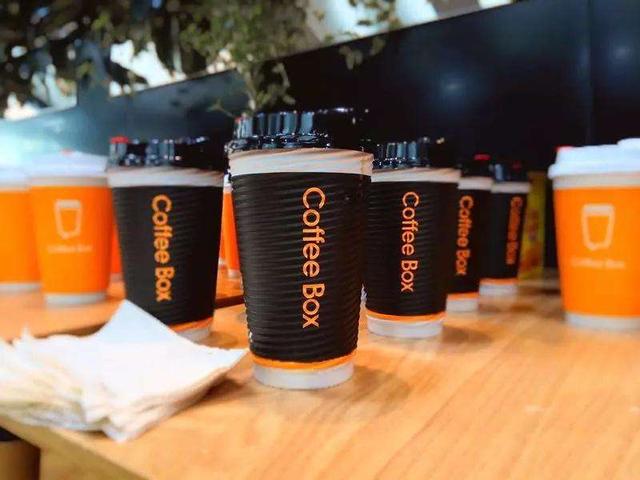
Even the "careful machine" of coffee-want to harvest consumers with a good cup of coffee?
Professional coffee knowledge exchange more coffee bean information Please follow the coffee workshop (Wechat official account cafe_style) in the increasingly noisy and lively Chinese coffee market in the last year, we have heard too many games, games or business models, whether it is Ruixing, the newly rising unicorn in the Chinese market, or the American coffee giant, which is severely challenged by emerging domestic brands for the first time this year.
Related
- What documents do you need to go through to open a coffee shop? coffee shop coffee shop certificate processing process
- How to purchase Coffee beans in small Cafe how to choose a suitable supplier for domestic Coffee supply Company
- How to drink Starbucks Fragrance White Coffee? how to make Australian White Coffee? what Italian coffee beans are recommended?
- The Story of Flora Coffee: the name of Flora Coffee Bean and the implication of the Flowers on Florna Coffee
- How much does a cup of coffee cost? How much is the profit of a cup of coffee? What is the profit of the coffee shop in a year?
- Yunnan small Coffee, known as "fragrant Coffee", introduces the characteristics of Alpine Arabica Coffee producing areas in Yunnan, China
- 2023 latest Starbucks full menu price list how much is a cup of Starbucks coffee what is better to drink the most popular hot and cold drinks recommended
- Starbucks different kinds of Coffee Price list Starbucks menu 2023 Top Ten Best drinks in Starbucks
- Starbucks Spring praise Comprehensive matching Coffee Bean theme Story Packaging implication and taste description
- The cost of a cup of coffee latte American coffee cost price and selling price

